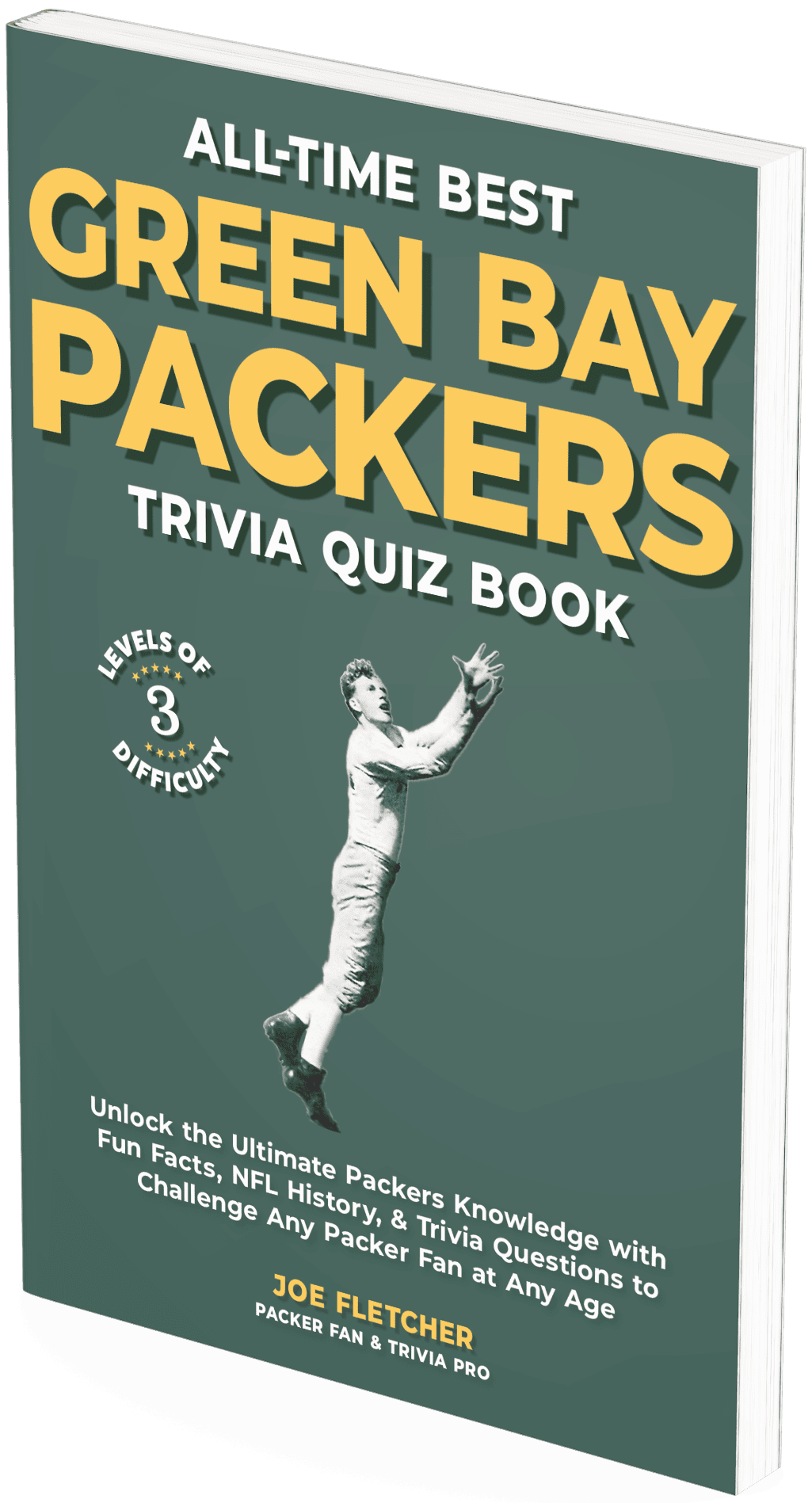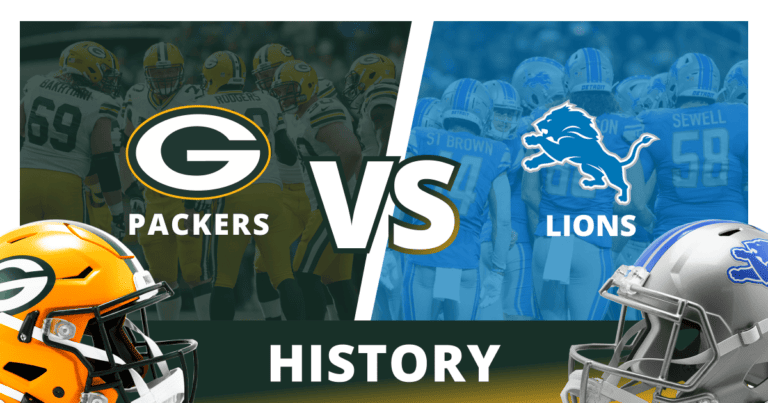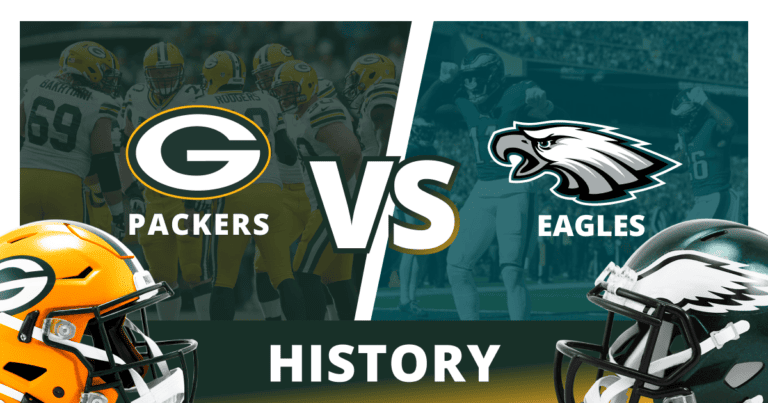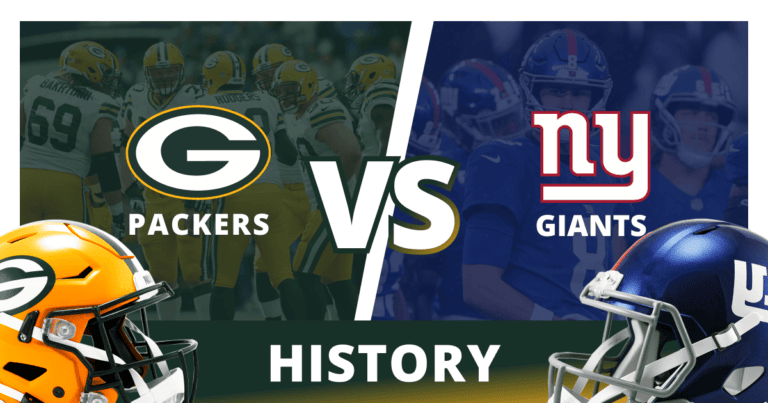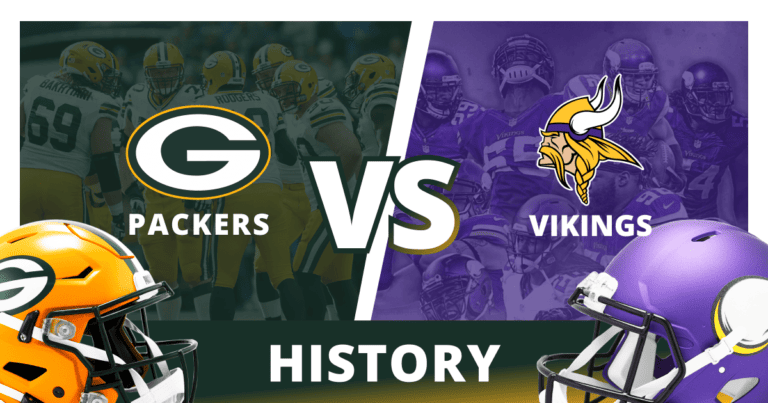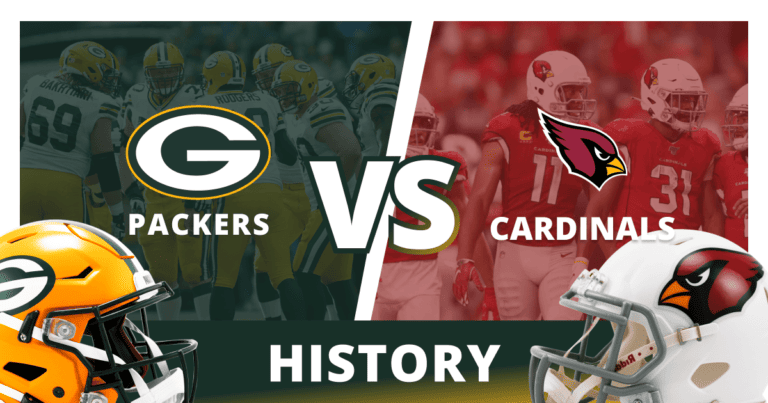
The Green Bay Packers lead the all-time series against the Pittsburgh Steelers 21 – 17 across 38 meetings spanning nine decades, with their lone playoff encounter, Super Bowl XLV, producing one of the most memorable championship games in NFL history.
While not a traditional rivalry due to the teams playing in different conferences, the Steelers are the Packers 6th oldest rivalry dating back to 1933.
Their infrequent meetings have consistently showcased two of football’s most storied franchises, combining for 19 NFL championships and representing the blue-collar heart of American football.
The Packers dominated the early years with a 9-0 start to the series, but Pittsburgh had won six straight home games against Green Bay until losing to Jordan Love and the Pack in Pittsburgh on October 26, 2025.
Matchup Summary
- All-time series: Green Bay Packers 21-17 (including postseason)
- Regular season: Green Bay Packers 20-17
- Postseason: Green Bay Packers 1-0 (Super Bowl XLV)
- Total meetings: 38 games from 1933-2025
The series began on October 15, 1933, when the Packers demolished the Pittsburgh Pirates (as the Steelers were then known) 47-0 at City Stadium in Green Bay.
This was Pittsburgh’s first-ever road game in NFL history.
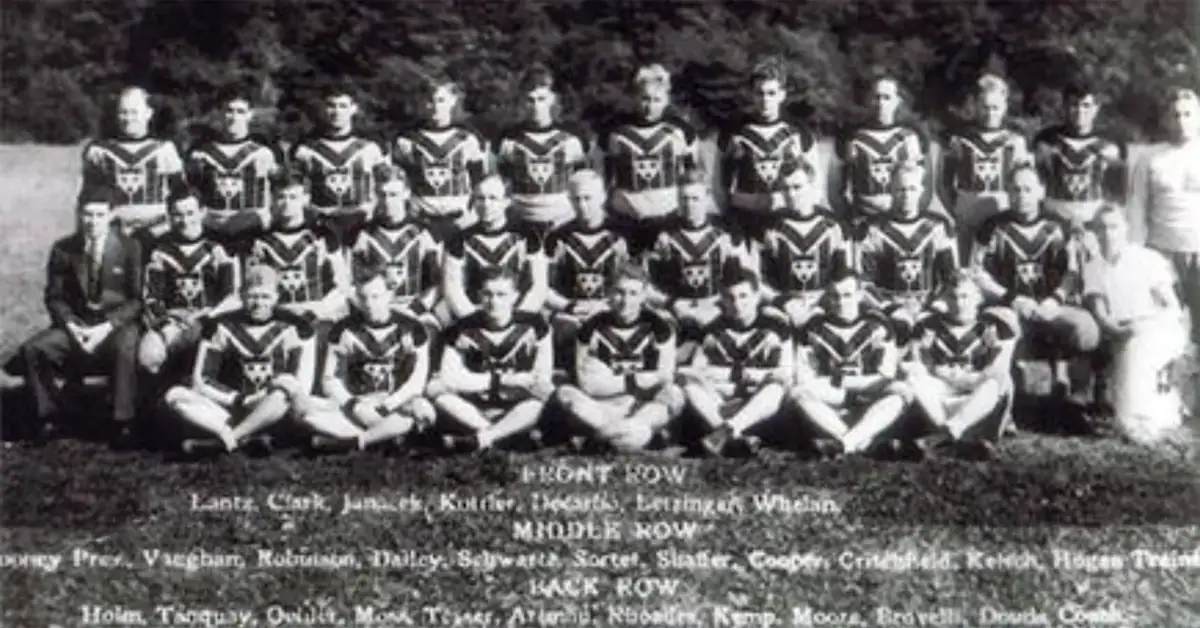
The Packers’ 9-game winning streak (1933-1946) remains the longest by either team, while the Steelers countered with a 4-game streak from 1975-1986.
Super Bowl XLV (February 6, 2011)
- Green Bay Packers 31, Pittsburgh Steelers 25
- Location: AT&T Stadium, Arlington, Texas
- Attendance: 103,219 (just short of Super Bowl record)
- MVP: Aaron Rodgers (24/39, 304 yards, 3 TD, 0 INT, 111.5 passer rating)
Super Bowl XLV stands as the signature moment in this matchup history, bringing together the two most championship-rich franchises in NFL history for their lone postseason encounter.
The Packers entered as the first 6-seed in NFC history to reach the Super Bowl, posting a 10-6 regular season record before winning three consecutive road playoff games.
The Steelers, at 12-4, sought their record seventh Super Bowl title and third championship in five years under head coach Mike Tomlin.
Leading Up to the Game
Both franchises brought unprecedented championship pedigree to Arlington. The Packers held 12 overall NFL championships entering the game (9 pre-Super Bowl era titles plus 3 Super Bowls).
Pittsburgh boasted 6 Super Bowl victories – the most in league history. This marked the Steelers’ eighth Super Bowl appearance, tying the Dallas Cowboys’ record at the time.
The game drew 111 million viewers on average, breaking the record as the most-watched program in American television history at that point.
The Packers’ arrival in Dallas was remarkable not just for their 6-seed status but for their resilience through injuries. By season’s end, 15 players sat on injured reserve, making Green Bay the second-youngest team in the NFL.
Yet they accomplished something no team in the Super Bowl era had done: they never trailed by more than seven points at any moment during the entire season, including playoffs.
Aaron Rodgers, in just his third full season as starter, sought to silence critics who questioned whether the Packers could win without Brett Favre and to accomplish what Favre never did – win Super Bowl MVP.
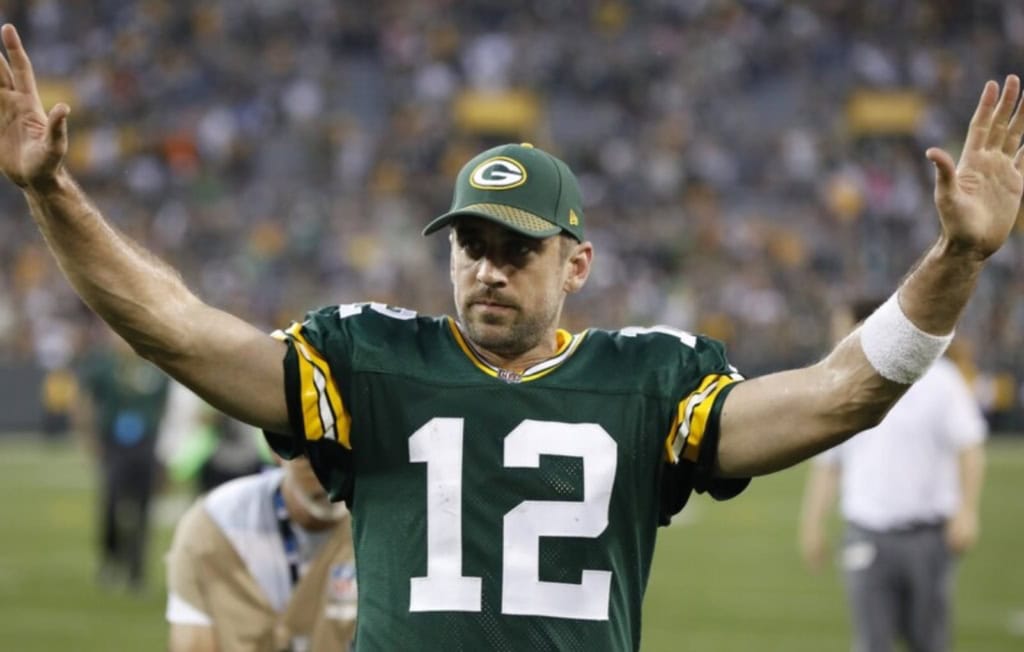
An Early Lead
Green Bay seized control immediately. On their opening drive, Rodgers connected with Jordy Nelson for a 29-yard touchdown on 3rd-and-1, capping an 80-yard march.
Just minutes later came the game’s pivotal moment when Nick Collins intercepted Ben Roethlisberger’s pass and returned it 37 yards for a touchdown. The Packers were off to a 14-0 lead.
When Jarrett Bush picked off Roethlisberger’s second pass of the night and Rodgers hit Greg Jennings for a 21-yard touchdown, Green Bay led 21-3 and appeared headed for a blowout.
Pittsburgh Responds
But Pittsburgh, championship-tested and resilient, refused to fold.
Roethlisberger orchestrated a masterful two-minute drill before halftime, hitting Hines Ward three times on the drive, the last a touchdown that made it 21-10 at intermission.
The Steelers carried that momentum into the third quarter when Rashard Mendenhall punched in an 8-yard touchdown run to cut the deficit to 21-17.
The loss of Charles Woodson to a broken collarbone seemed to give Pittsburgh hope of completing the comeback.
It Is Time
The fourth quarter opened with Pittsburgh gaining momentum and driving down the field.
After Charles Woodson broke his collarbone in Super Bowl XVL, Kevin Greene, the outside linebackers coach for the Packers, implored Clay Matthews with a brief, motivational speech.
“Everybody looks up to Wood as being a leader. He’s gone. Nobody’s standing up and rallying the troops. It is time. It is time.”
– Kevin Greene
Watch it on Youtube
On the very next snap, Matthews shot past a blocker and hit Steelers running back Rashard Mendenhall, forcing a fumble recovered by Desmond Bishop at the Packers’ 45-yard line – a huge momentum shift.
Six plays later, after a 38-yard completion to Nelson pushed Green Bay to Pittsburgh’s 2-yard line, Rodgers found Jennings for an 8-yard touchdown (after LaMarr Woodley had sacked Rodgers for a 6-yard loss on the previous play). The 28-17 lead proved crucial.
The Steelers mounted one final charge. Roethlisberger led a crisp drive, going 6-of-7 on the possession and hitting Mike Wallace for a 25-yard touchdown. The successful two-point conversion brought Pittsburgh within three at 28-25 with 7:34 remaining.
The Packers responded with a methodical drive that reached inside Pittsburgh’s 5-yard line before the Steelers’ defense forced Mason Crosby’s 23-yard field goal with 2:07 left, making it 31-25.
Roethlisberger, who had led miracle finishes throughout his career, had one final chance starting from his own 13 with 1:59 remaining. He completed passes to Heath Miller and Ward to reach midfield, but facing 4th-and-5 from their own 32 with 56 seconds left, his final three passes fell incomplete.
The Lombardi Trophy was returning to Titletown.
Key Performances
Rodgers’ near-flawless execution earned him the MVP trophy Favre never captured.
“It is a dream come true. It’s what I dreamt about as a little kid watching Joe Montana and Steve Young, and we just won the Super Bowl…. Defense was incredible tonight. They’ve been great all season, carrying us, getting us turnovers, scoring off turnovers. Unbelievable!”
– Aaron Rodgers
Jordy Nelson dominated with 9 receptions for 140 yards and a touchdown, consistently beating Pittsburgh’s secondary.
Greg Jennings caught two touchdowns, including the game-clincher. Nick Collins’ pick-six proved decisive, as all three Pittsburgh turnovers directly led to 21 Green Bay points.
For Pittsburgh, the statistics told a frustrating story. The Steelers outgained the Packers 387-338 in total yards and controlled time of possession 33:25 to 26:35, winning the battle of first downs 19-15.
Charles Woodson, despite his broken collarbone, delivered a defiant post-game message referencing President Obama’s comment about only attending the Super Bowl if the Bears won. The Packers indeed visited the White House later that year.
“The President don’t want to come watch us at the Super Bowl, guess what? We’ll go see him.”
– Charles Woodson
Roethlisberger’s two first-half interceptions and Mendenhall’s fourth-quarter fumble proved catastrophic. Ben Roethlisberger completed 25 of 40 passes for 263 yards, two touchdowns, and two interceptions (77.4 passer rating), while Mike Wallace hauled in 9 catches for 89 yards and a touchdown.
“I feel like I let the city of Pittsburgh down, the fans, my coaches, my teammates. It’s not a good feeling. There are probably a lot of ‘what ifs.’ There’re a lot of throws I’d like to have back. I don’t put blame on anybody but myself.”
– Ben Roethlisberger
Historic Shakeout
The game marked the end of an era. As of October 2025, Super Bowl XLV remains the last Super Bowl appearance for both franchises despite multiple conference championship appearances since.
For Green Bay, the victory represented their fourth Super Bowl title and record 13th overall NFL championship, ending a 14-year drought since their Super Bowl XXXI victory.
For Pittsburgh, it marked their second Super Bowl loss and ended their quest for a record seventh title.
The game showcased two of the league’s best coaches: Mike McCarthy in his fifth season with the Packers, and 38-year-old Mike Tomlin, already the youngest coach to win a Super Bowl and reach two Super Bowls.
December 20, 2009 Shootout (Steelers 37, Packers 36)
Location: Heinz Field, Pittsburgh, Pennsylvania
Context: Week 15; Packers 9-5, Steelers 7-7
This instant classic produced the first 37-36 game in NFL history (a Scorigami) and featured one of the most thrilling finishes imaginable.
Ben Roethlisberger threw for a Steelers franchise-record 503 yards (29/46, 3 TD, 0 INT), joining Y.A. Tittle and Warren Moon as the only quarterbacks at the time with 500+ yards, three touchdowns, and zero interceptions in a single game.
Aaron Rodgers countered with 383 yards (26/48) plus a rushing touchdown, yet came up one point short. The teams combined for 973 total yards and 936 passing yards with 0 turnovers despite 94 combined pass attempts.
Four lead changes occurred in the fourth quarter alone. After Rodgers hit James Jones for a 24-yard touchdown with 2:06 remaining to put Green Bay up 36-30, Roethlisberger faced a must-score situation starting from his own 22.
Big Ben delivered. He converted 4th-and-7 with a 32-yard strike to Santonio Holmes, then hit Heath Miller for 30 yards on 3rd-and-15 to keep the drive alive.
With 0 seconds remaining on the clock, Roethlisberger found Mike Wallace in the corner of the end zone for a 19-yard, toe-tapping touchdown – a catch eerily similar to Holmes’ Super Bowl XLIII heroics 10 months earlier.
Hines Ward caught 7 passes for 126 yards, while Heath Miller topped 100 yards receiving as well. The Steelers attempted a surprise onside kick after going up 30-28, but Ike Taylor touched the ball before it traveled 10 yards, giving the Packers possession at Pittsburgh’s 39.
This was Roethlisberger’s finest statistical performance of his career. The shootout foreshadowed the Super Bowl matchup that would occur 13 months later.
Christmas Eve, December 24, 1995 (Packers 24, Steelers 19)
Location: Lambeau Field, Green Bay, Wisconsin
Context: Week 17; Steelers 11-4 (playoff position secured), Packers 10-5 (needed win for division title)
This Christmas Eve showdown secured the Packers’ first NFC Central division title since 1972 – a 23-year drought. It’s remembered primarily for what didn’t happen on the game’s final play. With 11 seconds remaining and the Steelers facing 4th-and-goal from the Packers’ 6-yard line, Ben O’Donnell lofted a perfect pass to wide-open receiver Yancey Thigpen in the left corner of the end zone. Thigpen dropped the ball cleanly, preserving Green Bay’s victory and crushing Pittsburgh’s hopes for a remarkable comeback.
Brett Favre played through significant injuries, taking massive hits from Kevin Greene that left him “appearing to cough up his brains” according to contemporary accounts. He threw for 301 yards and two touchdowns despite the punishment, with backup Jim McMahon briefly replacing him before Favre refused to stay out.
The Steelers, who had already clinched their playoff position, rested some starters including running backs (Fred McAfee and Steve Avery started instead).
After Tim Lester’s 2-yard touchdown run with a failed two-point conversion made it 24-19, O’Donnell orchestrated the final drive with aplomb, converting two fourth downs to reach the Packers’ 6. Thigpen, who had caught 85 passes for 1,307 yards that season, beat his coverage badly.
“I beat him. I beat him bad. I had the ball and it just slipped through my hands.”
– Yancey Thigpen
The drop foreshadowed Pittsburgh’s heartbreaking Super Bowl XXX loss to Dallas the following month, where despite Thigpen catching a touchdown, the team fell 27-17. Meanwhile, Green Bay’s division title propelled them to the NFC Championship Game and set the stage for their Super Bowl XXXI victory the following season.
The coaching matchup featured Bill Cowher, who made the strategic decision to bench several starters, against Mike Holmgren. Favre’s gutsy performance, playing through obvious pain, exemplified the toughness that defined his career and galvanized the Packers’ turnaround under Holmgren.
September 27, 1992 (Packers 17, Steelers 3) – The First Start of Favre’s 297 in a Row
Location: Lambeau Field, Green Bay, Wisconsin
Context: Week 4; Brett Favre’s 1st career start
Brett Favre made his first NFL start, initiating what would become an NFL-record 297 consecutive starts (321 including playoffs).
Favre earned the job after Don Majkowski injured his ankle against Cincinnati the previous week – a game in which Favre had fumbled four times but also thrown the game-winning touchdown to Kitrick Taylor with 13 seconds left.
Against Pittsburgh, Favre started slowly (0-for-3 on the opening series) but found his rhythm in the second half, finishing with 210 passing yards and touchdown passes to Sterling Sharpe and Robert Brooks.
The Packers’ 17-3 victory marked Bill Cowher’s first loss as Steelers head coach after starting 2-0 in his rookie season.
The game is also remembered for All-Pro cornerback Rod Woodson’s career-worst performance, struggling badly in all phases. After the game, Cowher showed his leadership qualities by consoling rather than criticizing Woodson.
“You’ve had a bad day at the office. When that happens, you don’t quit the job, you analyze what went wrong and bounce back.”
– Bill Cowher
The significance of this game extends far beyond the final score. Favre’s consecutive starts streak wouldn’t end until 2010, a testament to his durability, toughness, and ironman mentality that became his trademark.
This was the beginning of the Packers’ resurrection from their wilderness years, the start of a Favre-Holmgren partnership that would produce a Super Bowl title and return Green Bay to NFL elite status.
December 22, 2013 Snow Game (Steelers 38, Packers 31)
Location: Lambeau Field, Green Bay, Wisconsin
Context: Week 16; Steelers 6-8 (started 0-4), Packers’ playoff hopes on the line
Weather: Heavy snow
Heavy snow blanketed Lambeau Field for this December thriller that featured six lead changes and a breakout performance from second-year running back Le’Veon Bell.
With Aaron Rodgers sidelined by a broken collarbone, Matt Flynn started for Green Bay in a game with significant postseason implications for both teams.
Le’Veon Bell rushed for 124 yards and a touchdown on 26 carries in his first 100-yard game, winning the rookie running back debate against Eddie Lacy, who countered with 84 yards and two touchdowns on 15 carries. Both were 2nd-round picks in the 2013 draft.
Bell’s performance was particularly impressive given he fumbled at the Pittsburgh 2-yard line on an early possession but bounced back with a clutch 25-yard run following a controversial penalty, setting up his game-winning 1-yard touchdown plunge with 1:28 remaining.
The dramatic finish saw Troy Polamalu force a critical fumble by Flynn that set up the Steelers’ winning drive. Cortez Allen returned an interception 40 yards for a touchdown earlier in the game, while Ben Roethlisberger even rushed for a 13-yard touchdown through the snow, showcasing Pittsburgh’s versatility.
Green Bay’s desperation showed on their final possession. After Micah Hyde returned the kickoff 70 yards to Pittsburgh’s 31, the Packers drove to the 1-yard line with a chance to win. But a false start penalty with a 10-second runoff effectively ended their hopes.
Flynn’s final pass sailed incomplete with three seconds left. The Steelers blocked Mason Crosby’s 23-yard field goal attempt on an earlier drive, though a controversial illegal batting penalty gave Green Bay a reprieve.
Clay Matthews re-aggravated a thumb injury and couldn’t finish the game, limiting Green Bay’s defensive effectiveness. The victory kept Pittsburgh’s slim playoff hopes alive at 7-8, though they ultimately missed the postseason at 8-8. The loss damaged Green Bay’s playoff positioning significantly.
November 26, 2017 (Steelers 31, Packers 28) – Boswell’s Primetime Walk-off
Location: Heinz Field, Pittsburgh, Pennsylvania
Context: Week 12, Sunday Night Football; Packers without Aaron Rodgers (broken collarbone)
With Aaron Rodgers sidelined, backup quarterback Brett Hundley delivered the performance of his brief starting career (17-of-26, 245 yards, 3 TD, 134.3 passer rating), throwing touchdown passes of 39, 54, and 55 yards.
Yet it wasn’t enough against a Pittsburgh offense firing on all cylinders, as Ben Roethlisberger threw for 351 yards and four touchdowns (33/45, 2 INT), and Antonio Brown dominated with 10 catches for 169 yards and two scores.
The game appeared headed to overtime when Jamaal Williams scored on a 4-yard touchdown run with 2:02 remaining, tying the game 28-28. But Pittsburgh had other plans. Starting from their own 30 with 17 seconds left, the Steelers faced a daunting task.
Antonio Brown made the play of the game – a spectacular 23-yard sideline catch where he tapped both toes in bounds requiring replay review to confirm. The catch moved Pittsburgh to Green Bay’s 37 with time for one final play.
Le’Veon Bell inexplicably lost two yards on the final play before getting out of bounds, pushing the field goal attempt back to 53 yards. Chris Boswell, who had missed his first extra point of the season earlier in the game, nailed the 53-yarder as time expired for a 31-28 victory.
The kick tied the Heinz Field record for longest field goal (53 yards) and marked Boswell’s fourth game-winning field goal as time expired during the 2017 season.
The loss dropped Green Bay further from playoff contention without Rodgers, while Pittsburgh improved its AFC positioning.
November 6, 2005 (Steelers 20, Packers 10)
Location: Lambeau Field, Green Bay, Wisconsin
Context: Crucial win on Pittsburgh’s road to Super Bowl XL; Ben Roethlisberger and Jerome Bettis both out
This game proved pivotal to the Steelers’ eventual Super Bowl XL championship run, even though Pittsburgh’s two biggest offensive stars, Ben Roethlisberger and Jerome Bettis, sat out with injuries. Backup quarterback Charlie Batch managed the game competently while avoiding critical mistakes, but the real stars were running back Duce Staley and safety Troy Polamalu.
Duce Staley, in his first carry of the year, rushed for 76 yards and a touchdown on 14 carries (5.4 average, long of 17 yards), providing the ground game Pittsburgh desperately needed. Bill Cowher later reflected on the game’s importance: “If we don’t have Duce, we don’t win that game. If we don’t win that game, we don’t make the playoffs, and never get to Super Bowl XL.”
The defensive highlight came when Bryant McFadden strip-sacked Brett Favre, and Troy Polamalu scooped up the fumble and returned it 77 yards for a touchdown. Willie Parker carried the ball five times before leaving with an injury, making Staley’s performance even more critical.
November 9, 1998 (Steelers 27, Packers 20)
Location: Three Rivers Stadium, Pittsburgh, Pennsylvania
Context: Monday Night Football; Steelers struggling under offensive coordinator Ray Sherman
On Monday Night Football, the Steelers built a seemingly comfortable 27-3 lead after three quarters behind solid play from quarterback Kordell Stewart, who led the offense to a rare productive night. Then everything nearly fell apart due to an ill-advised trick play.
With the game seemingly in hand, offensive coordinator Ray Sherman called a trick play with backup Mike Tomczak under center and Kordell Stewart lined up as a receiver. The botched snap led to chaos, and Keith McKenzie returned the fumble 88 yards for a touchdown. The Packers scored 17 unanswered points and suddenly threatened to complete an improbable comeback.
Pittsburgh’s defense held firm in the final minutes, preserving the 27-20 victory, but the near-collapse exposed the dangers of cute play-calling. The game featured a young Hines Ward catching his third career reception as a rookie, beginning what would become a Hall of Fame-caliber career.
December 17, 1967 (Steelers 24, Packers 17)
Location: Lambeau Field, Green Bay, Wisconsin
Context: Rare home loss for Vince Lombardi’s Packers en route to their Super Bowl II championship
In Vince Lombardi’s final regular season as Packers head coach, Pittsburgh accomplished something few teams managed during the dynasty years – winning at Lambeau Field. The Packers had already clinched the division and would win the legendary Ice Bowl against Dallas two weeks later on their way to Super Bowl II, but this December afternoon belonged to the Steelers.
The game marked the first time since 1923 that the Packers finished their regular season at home, adding historical significance to the contest. Bart Starr played for Green Bay against a Steelers defense that featured defensive tackle Ken Kortas. The 24-17 upset demonstrated that even the great Lombardi teams were vulnerable when caught looking ahead.
Bill Austin, a former Lombardi assistant, coached the Steelers and gained satisfaction in defeating his mentor. While the loss had no real impact on Green Bay’s championship aspirations, it remains notable as a rare blemish during one of football’s greatest dynasties.
October 26, 2025 (Packers 35, Steelers 25) Aaron Rodgers vs The Packers
Location: Acrisure Stadium, Pittsburgh, Pennsylvania
Context: Aaron Rodgers’ first matchup vs his former team
The Green Bay Packers defeated the Pittsburgh Steelers 35-25 on October 26, 2025 on Sunday Night Football. The Packers trailed 16-7 at halftime but scored 28 points in the second half to secure the win, their first in Pittsburgh since 1970.
Jordan Love completed 29 of 35 passes for 360 yards and three touchdowns, including a franchise record-tying streak of 20 consecutive completions that spanned the end of the first half and much of the second.
Tight end Tucker Kraft had a career-high 143 receiving yards and two touchdowns, while Christian Watson contributed 85 yards in his first start since tearing his ACL the previous season.
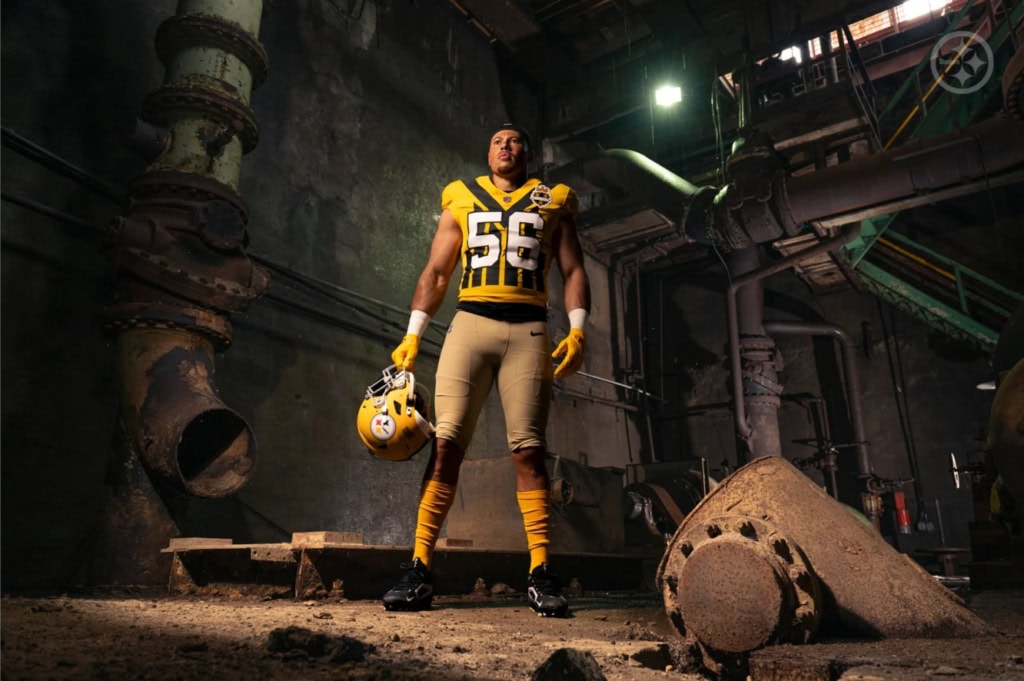
The Steelers’ defense struggled to contain Green Bay in the second half, allowing multiple scoring drives to shift the momentum.
Aaron Rodgers, in his first career start against the Packers, completed 24 of 36 passes for 219 yards and two touchdowns but was sacked three times and hit four times.
As a historic matchup of Aaron Rodgers vs Jordan Love, his former protégé drafted in the first round in 2020 to succeed him, Rodgers failed to become the 5th quarterback to beat all 32 NFL teams.
Love built on his ascending legacy by matching a Green Bay record held by Brett Favre by completing 20 straight passes.
